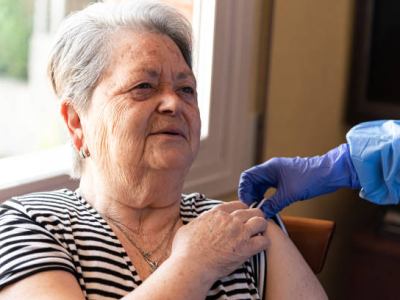Jul 16, 2009 (CIDRAP News) – Citing the questionable usefulness of reporting pandemic H1N1 case counts and the burden it puts on countries experiencing widespread transmission, the World Health Organization (WHO) announced today it will no longer issue regular reports of confirmed global case totals.
The WHO has issued 58 such reports since the start of the novel H1N1 outbreak, the last one on Jul 6.
In a statement today, the WHO said countries with sustained community transmission are having an extremely difficult time confirming cases through laboratory testing. In addition, counting individual cases isn't essential for monitoring the level or nature of risk posed by the virus or implementing response measures.
Detecting and confirming all possible cases is highly resource-intensive, the WHO said. "In some countries, this strategy is absorbing most national laboratory and resource capacity, leaving little capacity for the monitoring and investigation of severe cases and other exceptional events."
For these reasons, the WHO said it will no longer issue reports of confirmed cases. However, it said it will provide regular updates on the spread of pandemic flu in newly affected countries.
The focus of surveillance activities in countries where the virus is already established will shift to existing systems for monitoring seasonal flu, the WHO said. Countries are no longer required to submit regular reports of individual confirmed cases and deaths to the WHO.
Monitoring for unusual events such as clusters of severe or fatal cases or changes in clinical patterns is important and should continue, the agency said. It added that countries should maintain vigilance for changes in transmission patterns, such as rising rates of school or work absenteeism, and also surges in emergency department visits, which could foreshadow increasing numbers of severe cases.
Keeping close track of changes in the pandemic virus is also essential for case management and vaccine development, the WHO said. It recommends that even countries with limited lab capacity to follow up initial viological assessment by testing at least 10 samples a week.
CDC says change is no surprise
Tom Skinner, a spokesman for the US Centers for Disease Control and Prevention (CDC), said the change in the WHO's case-reporting policy isn't unexpected, because the WHO and CDC have been emphasizing over the past several weeks that the number of lab-confirmed cases is just the tip of the iceberg of the true number of people who are or were sick with the novel H1N1 virus.
Specific case counts were once needed to help characterize the early spread of the disease, he said. Now that the virus is widespread and poised for a potential surge in the fall, "specific case counts are no longer needed, and since they don't represent the true picture of the situation, they are not necessary," Skinner said.
The CDC will likely make a similar move to downplay the number of confirmed cases, but it will maintain, if not expand, surveillance to gauge the health impact of the pandemic and the severity of the illness, he said.
Michael T. Osterholm, PhD, MPH, director of the University of Minnesota Center for Infectious Disease Research and Policy, publisher of CIDRAP News, said he fully supports the WHO's policy change. The media and other groups have made too much of the case numbers, which grossly underestimate the illness burden, he said.
"This a good thing, but it's only the beginning of what needs to be done," Osterholm said, adding that he hopes the WHO will introduce other comprehensive surveillance measures to more accurately gauge pandemic morbidity and mortality.
Case counts give wrong impression
Peter Sandman, PhD, a New Jersey-based consultant and risk-communication expert, told CIDRAP News that early on in the novel H1N1 outbreak the WHO had a good technical reason to urge countries to track the number of confirmed cases—to help assess community transmission—but the usefulness of the numbers quickly waned.
"The big problem is that almost everyone has used the number of confirmed cases as if it were the true number of cases," he said. "Everyone was pouncing on those numbers." Sandman said even CIDRAP News has made this mistake, repeatedly reporting the number of confirmed cases as if the number meant anything other than how many confirmatory tests were being done.
The downside of the focus on the confirmed case numbers has been that the public perceives the pandemic as less pervasive than experts know it to be, Sandman said. When a public health official makes a reasonable extrapolation of the burden of disease, the number of confirmed cases seems puny by comparison. "Reputable experts are dismissed as nuts," he added.
Sandman said another problem is that an emphasis on the number of confirmed cases, along with the number of deaths, gives the public—and even some government and public health officials—an inflated impression of the case fatality rate.
"The pandemic H1N1 virus could get more deadly at any time," Sandman said. "But if you compare the number of pandemic deaths in the US to the CDC estimates of how many people have already had the disease, it calculates out that the pandemic is less deadly than seasonal flu so far."
However, most people don't do that calculation, he said. "People compare the number of deaths to the number of confirmed cases, and that makes the pandemic look much more deadly, because all the cases that never got confirmatory testing are missing from the denominator."
See also:
Jul 16 WHO statement


















